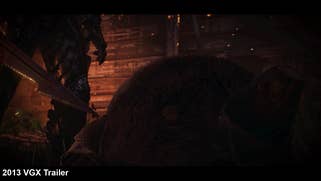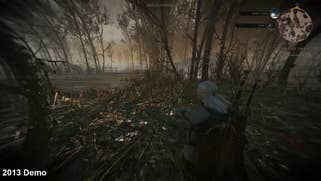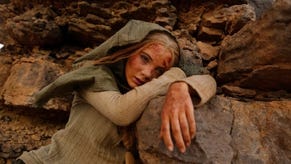What can we learn from The Witcher 3 "downgrade" fiasco?
Honest trailers.
Mere weeks away from E3, developers and publishers are working flat-out behind the scenes to make this the show of their lives. There will be new game announcements, surprise reveals and eagerly anticipated re-reveals. In many cases, it'll be our first opportunity to see some of the biggest titles of this year and the next. Doubtless, we shall see some amazing software running on console and PC - but at the same time, we strongly suspect that there'll be a vast array of marketing materials that end up bearing little resemblance to final software, or at the very least misrepresent the quality of the featured game. Even with the very best intentions, it's a situation that can backfire badly, as CD Projekt Red has discovered over the last couple of weeks.
To be frank, it's been difficult and frustrating for Digital Foundry to cover this story. Of course, we see all the forum posts and Imgur comparison images that you do, but at the same time without access to the game itself, it's very difficult to add anything of additional value to the debate - and we only received PC code on the day of release. However, knowing that our colleague Robert Purchese would actually be in the studio with CDPR, with first-hand access to sources that could get to the bottom of the story, we were at least in a position to get answers to our most pressing questions, and to put our point of view across to the developer.
Bertie's remarkable story provides eminently plausible and reasonable reasons behind the differences with the 2013 reveal trailer, and reminds us that CDPR - in common with the vast majority of game developers - are fundamentally decent people at heart, doing their utmost to bring us their best quality work. It also emphasises that conspiracy theories - in this case an apparently deliberate campaign to make The Witcher 3 look better than it actually is - only flourish when there is a lack of communication between the studio and its fans.
In the wake of the interview, the downgrade conspiracies have given way to some understandings of the challenges facing developers and the trades they have to make during production. The issue is defused still further by the fact is that the final game is a brilliant release, but clearly the immense quality of that initial trailer - and its prominence in the game's marketing campaign - are an issue. Without the context supplied by CDPR's comments, the changes made to The Witcher 3 since its 2013 reveal do make it seem as if the studio fell short of meeting its original vision, and the rather narrow scope of the trailer vs final game comparisons actually serve to eclipse the scale of the game's actual achievements.
So what actually happened? What's clear is that early on in development, The Witcher 3 underwent a massive overhaul to its core rendering technology in order to deliver on the developer's vision for a dynamic open world. The first mistake was showcasing its vision for the game before it was actually functioning - the studio simply didn't know if what it was showing was even possible, as the latest iteration of the firm's REDEngine was still deep in development. Prefacing the 2013 trailer by saying that it was in-game material was clearly a misstep when the reality was that The Witcher 3 as we would come to experience it wasn't in a playable state at the time.
While subsequent showings of the game were much more representative of final code, it's the 2013 footage that causes problems - not least its deployment in more recent marketing over a year after the early code was shelved. It seems that miscommunication isn't just an issue between studio and fans, but also between internal CDPR departments and the firm's marketeers: would the tech team really sign off on marketing materials containing elements of an early game prototype that no longer represented their actual work? Would the marketing team be aware that the early videos shouldn't be recycled, or did they just pick out existing cool stuff to supplement their new assets? Indeed, did they actually think it would be an issue at all? After all, virtually all games are marketed using visual materials that look way better than the quality of the final software.
Having first presented its vision of a massive "multi-region open world" experience, it's clear that the version of the game now in our hands bears little resemblance to this original prototype. However, The Witcher 3 was demonstrated on Xbox One during the Microsoft conference at E3 2014, and behind closed doors on PC. CDPR eventually went on to release this demonstration publicly, allowing fans to get an extended preview of actual code in motion. What's curious is that even armed with 35 minutes of direct feed footage, the whole downgrade debate had little traction at that point, and from this point on we feel that CD Projekt Red itself was very open about the state of the game.
There were changes made from this demo that impacted the final game in both positive and negative ways, but the differences are relatively minor. Geometry changed in a select few instances, the approach to lighting and colour correction differs a bit, and the foliage LODs changed to combat aliasing at the expense of clarity. Yet, some improvements were made including a greater draw distance, additional foliage, and what seems to be a stronger wind simulation.








This is where we see a bit of a disconnect between the players' reaction to the downgrade and the development team's response. CD Projekt Red was sharing the actual game as it was being built at this point and praise was mostly unanimous. It seems fair to imagine that the studio was actually caught off-guard by the negative response that followed as the final game neared release. The fact is that the team had been very open with sharing the game for the past year, yet suddenly people seemed shocked that it didn't look like the 2013 footage, despite that being fairly obvious for some time.
The final game is very much in line with, and in some cases improved over, the 2014 demo. Yet despite the fundamental shift in the core technology, remnants of the original assets based on the shelved prototype continued to appear in marketing materials - and that initial asset would prove to be the albatross around CDPR's neck. Hindsight is a wonderful thing of course, but E3 2014 would have been the best opportunity to explain that the initial teaser for the game was based on old tech, that the engine had been massively overhauled and that the final release would be very different. It was also the right time for the older trailer and associated materials to be retired.
Of course, the fact that 2013 elements still made their way into later marketing, along with the use of earlier screenshots in order to promote the game, is still causing friction - and in our opinion, there is some merit to the disquiet here. The Witcher 3's physical packaging uses screenshots from early code that is not representative of the actual release while the game's promotional website uses a video background including a number of clips from that initial 2013 showcase. Even some of the later trailers - including the E3 2014 asset - use both representative footage and elements from the nixed prototype.
















CD Projekt Red are hardly the worst offenders when it comes to using unrepresentative assets - indeed, one way or another, the team does its best to show us actual real-time code - but clearly the idea of using 'sexed up' media in modern video game marketing is nothing new, and it's a practise that really needs to change. CG trailers are fundamentally pointless, while so-called "in-engine" videos and screenshots also lead to confusion and upset. A good example of this is last year's E3 trailer for Uncharted 4 - apparently 'captured directly from a PlayStation 4 system' - coming under fire when actual real-time gameplay didn't look much like the initial reveal. The unfavourable comparisons actually served to take the sheen off what was an impressive reveal of real-time code.
In general, the practise of using "bullshots" - ultra high-res game screenshots that couldn't possibly be running in real-time - also needs to cease, or at least it needs to be made clear that they are artwork as opposed to in-game screenshots. The notion of marketing something using media that deliberately makes the product look better than it actually is needs to be addressed as it's fundamentally and unquestionably dishonest. Using direct feed screenshots from an abandoned prototype is one thing, and as we've seen, more than likely an error - a product of miscommunication. However, deliberately crafting non-representative assets throughout the development cycle is quite another. There's the unmistakable feeling that it's time for the industry to be more responsible about the materials used to make its games.
So, we'll be watching the E3 2015 presentations with much interest. It'll be ten years since Sony revealed PlayStation 3 to the world, backing its new console reveal with the now infamous, overly optimistic 'target renders'. The platform holder was rightfully called out over a fundamentally dishonest approach to showing off what its new hardware was capable of, with Killzone 2 developer Guerrilla Games bearing the brunt of much of the criticism. In the wake of that fiasco, things changed - Guerrilla itself insisted on real-time live demos going forward, culminating in Killzone Shadow Fall's debut at the PS4 reveal back in February 2013. The developer had the confidence to stand by the quality of its software - a 'real-time, all the time' approach to marketing games that we'd like to see become the standard wherever possible.
Positively, there's some evidence that other developers may be following suit. Ubisoft's recent Assassin's Creed Syndicate reveal may have stacked the deck in the firm's favour by using code running on a top-end PC, but all the evidence suggests that we were looking at real-time video of actual code running on consumer-level hardware. And whether that's on console or PC, that's the way it should be - games these days are uniformly good-looking and don't particularly need embellishment. And without a fundamental reappraisal in the way that games are presented, we can't help but feel that the industry is one class-action lawsuit away from being forced to clean up its act.
Additional reporting, trailer analysis and assets by John Linneman.









